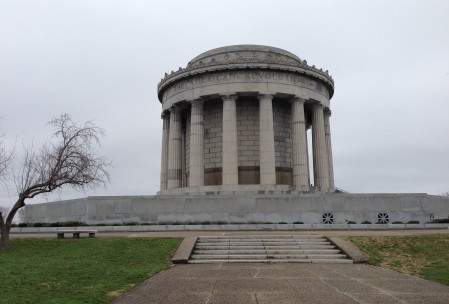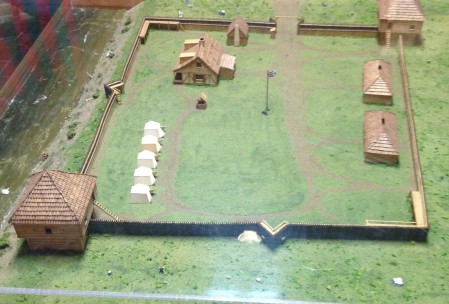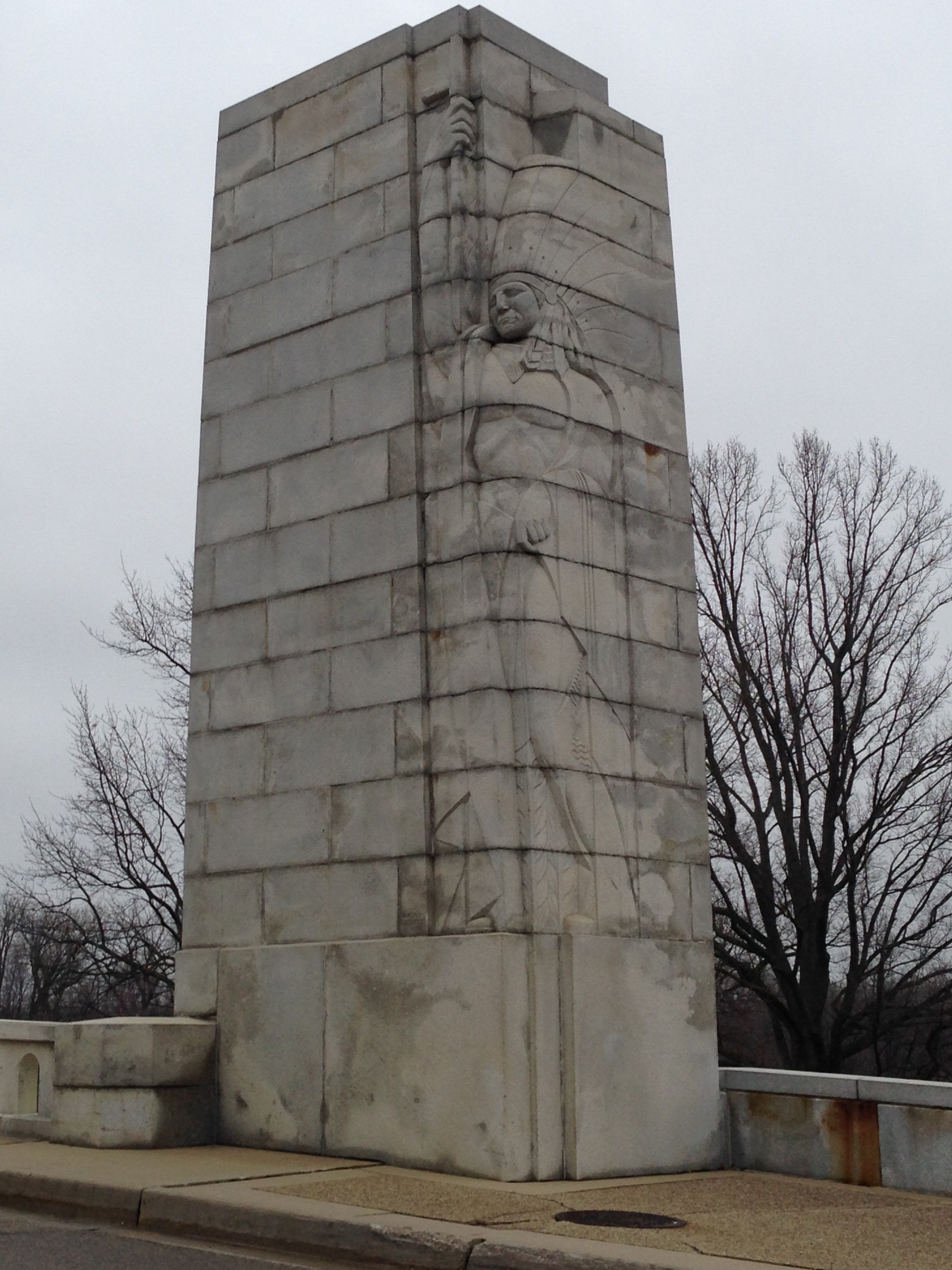
This past week, my project’s topic really came alive as I had the opportunity to visit the site of Fort Sackville in Vincennes, IN. While the Fort is no longer standing, I was able to visit the George Rogers Clark National Historic Park and Memorial run by the NPS. My first stop was the National Park’s visitor center, where I was able to see what artifacts they had (not many) and get a taste of how they presented the story. They also had a diorama that helped me visualize what the Fort might have looked like in 1779. In addition, the ranger gave me some more detailed information about the American Indians who were involved on both the American and British sides. This was really useful, since I have been struggling with finding information from that perspective.

I also received detailed information about the monument and was able to take my own pictures of the site. Even though it looks surprisingly similar to the rotunda of the Jefferson Memorial, I learned that the George Roger Clark Memorial was created first, from 1931-1933, for the Sesquicentennial celebration of the American Revolution. The memorial is famous for having 28 ft x 16 ft (huge!) murals painted on linen, depicting seven scenes in Roger’s campaign. It was interesting to see artist Ezra Winter‘s interpretations of the events. In most, Clark appears very heroic, while the French people and American Indians appear very submissive. In one of the panels, Winter also depicts the American Indians as Plains Indians, with massive headdresses, something that would not have been worn by the Woodland Indians (such as the Wea, Miami, Kickapoo, Piankashaw, Delaware and Shawnee) who lived in the area. This mistake is also mirrored in two giant sculptures that guard the sides of the bridge over the Wabash River.

Next to the memorial was the Old Cathedral Complex, including the St. Francis Xavier Cathedral, dating from 1749, and French and Indian Cemetery. I was thrilled to learn that some of the gravestone that I already using images of in my Omeka exhibit were actually in this cemetery. I was able to take my own pictures of these gravestone, and now I have been working on replacing the exhibit images that I found online with my own pictures. Of course, using your own pictures is not only meaningful to you as a person, but it also ensures that there will be no copyright issues.
Overall, I was really impressed with the NPS’s effort to include French and American Indian perspectives in their site literature and to celebrate various individuals (other than Clark) who played an important role in the Siege of Sackville. While Clark’s statute “naturally” stands in the middle of a massive rotunda, they also included very prominent statues to Father Pierre Gibault, a French vicar, and Francis Vigo, an Italian-Canadian Fur trader. At the Cemetery, they also had graves for Francois Busseron and Joseph Bowman, two figures that I am planning to highlight in my project.

So far, my challenges have been figuring out how to organize my website and finding information about the American Indian perspective. I have been trying to decide how best to group and present my information. My first idea was to choose 4 or 5 events or scenes and then present 4 different perspectives as sub pages of each event. My second idea was to choose 5 or 6 important people – from the various different perspectives – and focus on telling the story from each of their points of view. As I mentioned above, I got some good information from my NPS visit, so now I need to add that too the information I already have. I also need to spend some time updating my objects, so that I can include my own pictures instead of someone else’s. Finally, I need to spend some more time researching about the topic and incorporating the information from the NPS into my findings.


